|
|
|
|
When is a sailboat not a sailboat?The Rules of the Road.
|
|||||||
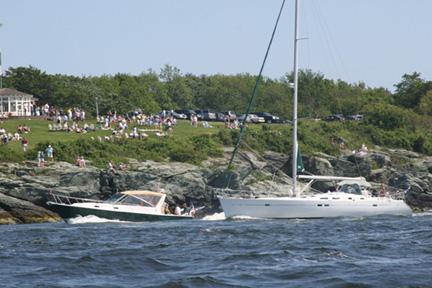 |
Unless you’ve actually studied the COLREGS, government regulations that stipulate who has the right of way on the waters, you probably know only the rudimentary rules of the road. There are so many misconceptions out there – like the blanket statement that sailboats have the right of way over power boats, which is misleading at best. Here’s a quick primer that will not make you an expert but is intended to cover some of the most important territory, while pointing out what all boaters should make a point of studying and understanding...the rules that govern the rights of way on the waters.
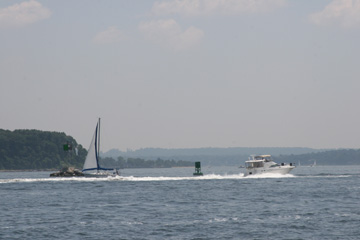 |
Naturally, things aren’t always that simple when rules for the seas are in questions. The rules were developed over centuries of commercial traffic when the captains of vessels were well versed in maritime law and vastly qualified to interpret it. It’s only recently that so many pleasure craft are plying the waters – mostly with skippers that have barely taken a basic boating safety course.
The rules are somewhat different for inland waters (rivers,
So over which vessels does a sailboat have the right of way? A sailboat when sailing has the right of way over an unemcumbered power vessel. It means a vessel under power that is not performing any other duties that might hamper its ability to maneuver. Some of the types of activities in question may be commercial fishing, towing, restricted by draft, and not under command (eg, broken down or malfunctioning). The moment a vessel under power becomes encumbered, it gets the right of way. Anchored vessels are not underway and therefore are not included in the rules, although there are rules that pertain to marking anchored vessels so that vessels underway can determine that they are anchored.
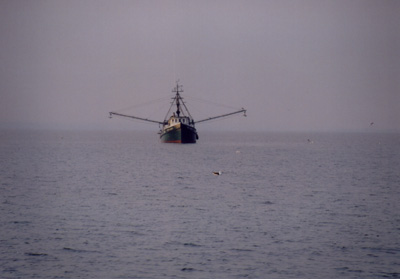 |
Learning to distinguish which vessel is encumbered is the tough part. We’re not going to cover the lights and dayshapes displayed by vessels to tell you what they’re up to in this article. The best way to learn that is to get some flashcards and practice recognizing the combinations of lights and shapes that designate the vessel’s activity underway – and to actually match up the flashcard with the real situation on the water. They don’t often translate intuitively. Practice picking out the lights around you at night, both moving and stationary until they become second nature.
But let’s at least take a look at the hierarchy of rights of way according to the COLREGS.
Vessels with the least right of way are shallow draft power vessels whose engines are operable. This is the most maneuverable boat. It can get out of the way of most other vessels in most situations. Your basic recreational power boat is in this category. Stay out of the way of everyone else as a basic rule.
Next is the sailboat under sail (remember that a sailboat under power is a power boat). If a sailboat and a powerboat meet in a crossing situation, the power vessel is to adjust its course sufficiently to avoid a dangerous situation. The sailboat is the stand on vessel and must continue to hold its course unless it is clear that danger is imminent. If the power vessel does not adjust its heading, the sailboat has the duty to make a course correction to avoid collision. In an overtaking situation, the rules are pretty simple. The overtaking vessel has to give way to the vessel it is overtaking regardless of whether it is sailing or under power.
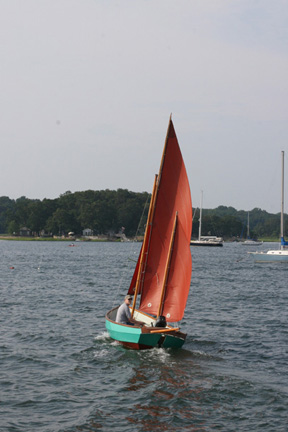 |
One rule of thumb is that a course correction to avoid danger should be definitive enough to be easily distinguished by oncoming vessels – 90 degrees to starboard for example would register clearly via radar that a course correction has occurred. Slight course corrections can be mistaken or overlooked and should be avoided. So if the situation is looking dicey, exit stage right.
Now, what happens if a powerboat is a commercial fishing vessel? If it is not fishing, it is just a powerboat. If it is fishing, defined as having gear actively deployed (fishing lines do not count unless they restrict maneuverability), it has the right of way over all unencumbered power and sailing vessels. So if the fishing vessel is trawling, it has the right of way over power, sail, and other fishing vessels that are trolling but maneuverable.
Next in line of rights is the vessel towing. Whether stern or side tow does not matter. What does matter is that its maneuverability is restricted by the tow. This rule covers everyone from TowBoatUS to a tugboat hauling a megabarge.
Then there’s the vessel not under command (NUC). It could be drifting without engine power, it could have a fouled prop, or the captain may be otherwise occupied, as in putting out a fire.
Finally, there’s the vessel restricted by draft, one that by the nature of the depth in a channel must stay within a confined area. This is clear on the
There are several other categories of vessels (like minesweeper) but they are rare in our waters so we’ll leave them out for now. A seaplane, by the way, has to keep out of the way of everyone else.
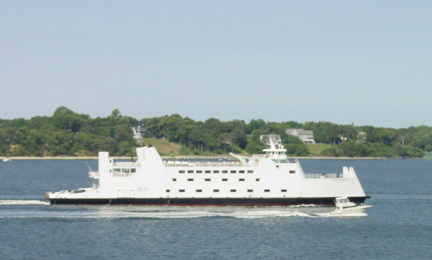 |
Sailboats without engines, canoes, kayaks, and the like if they don’t have engines fall into the sailboat category – those that have the right of way over all unencumbered power vessels. But it is always best to keep in mind that size matters. If a kayak gets in the way of a freighter, the freighter won’t have the distance in which to reverse engines and stop. And that is one of the key things about the rules – they do not take the place of common sense and they do require you to always have a lookout, maintain safe speed, and take action if risk of a collision exists.
So it’s really quite simple if you think about it. All vessels with engines are power vessels until they are doing something else – sailing, fishing, towing, restricted in a channel or not a power vessel any more at all because of some system failure. Then it’s a matter of degree of maneuverability.
One last thought here is that, if there is a question about right of way and the intentions of a vessel with which you might be on a collision course, it is always best to hail that vessel on the VHF radio. Explaining the situation and understanding the other vessel's intentions can save a great deal deal of agita and worse. Simply get on channel 16 (or 13 for commercial traffic) and hail the "ferry entering Port Jefferson." Identify your vessel and position relative to the ferry and ask what they expect to be doing. Usually the captain of the other vessel will come on and discuss his intentions with you. Then you can resolve who should take which action.
In fact, we had one funny story. We were transiting Long Island Sound in an overnight passage and Alex was on watch. He was keeping an eye on the tanker to port which had been gaining on us for several hours. Alex's intention was to let him pass and then tuck in behind him to cross into Port Jefferson harbor as daylight broke. Suddenly, there was a crackle on the radio and a vessel hailed "the sailboat off Port Jefferson this is the large tanker approaching you." Alex responded and thinking he was conversing with the captain of the tanker he'd been watching, he explained what he planned to do and how we would maintain safe distance. The captain of the tanker said, "Sorry Captain, this is not the vessel to your starboard. We are the REALLY BIG ship coming up on your stern." When Alex turned around, you can imagine what he said. At least he wasn't pressing the mike key. The really big ship was making very fast speed and had come up on us quickly. The captain of the two vessels had a nice chat, agreed that we would wait until he passed us, and then we'd make our approach into Port Jefferson. In a very polite and civilized discussion, a potentially hazardous situation was completely avoided.
We cover day shapes and night lights which must be displayed by vessels to indicate the activity they are engaging in while underway in another chapter. Stay tuned, and stay safe.
Please do not rely on this discussion alone. There are many more rules that apply to what one is required to do in crossing and passing situations. Please take the time to review the COLREGS and absorb the rules. To review the actual regulations and learn more, visit this site http://www.boatsafe.com/nauticalknowhow/boating/colregs.html
|
Europe: Port Aleria, Rosnakilly, Kilmeena, Westport, Co. Mayo, Ireland - USA: PO Box 726, Mahwah, NJ 07430 All content on this site is subject to Copyright© - All rights reserved. Contact us - Advertising - Privacy - Terms & Conditions - Copyright & Trademark - Webmaster |